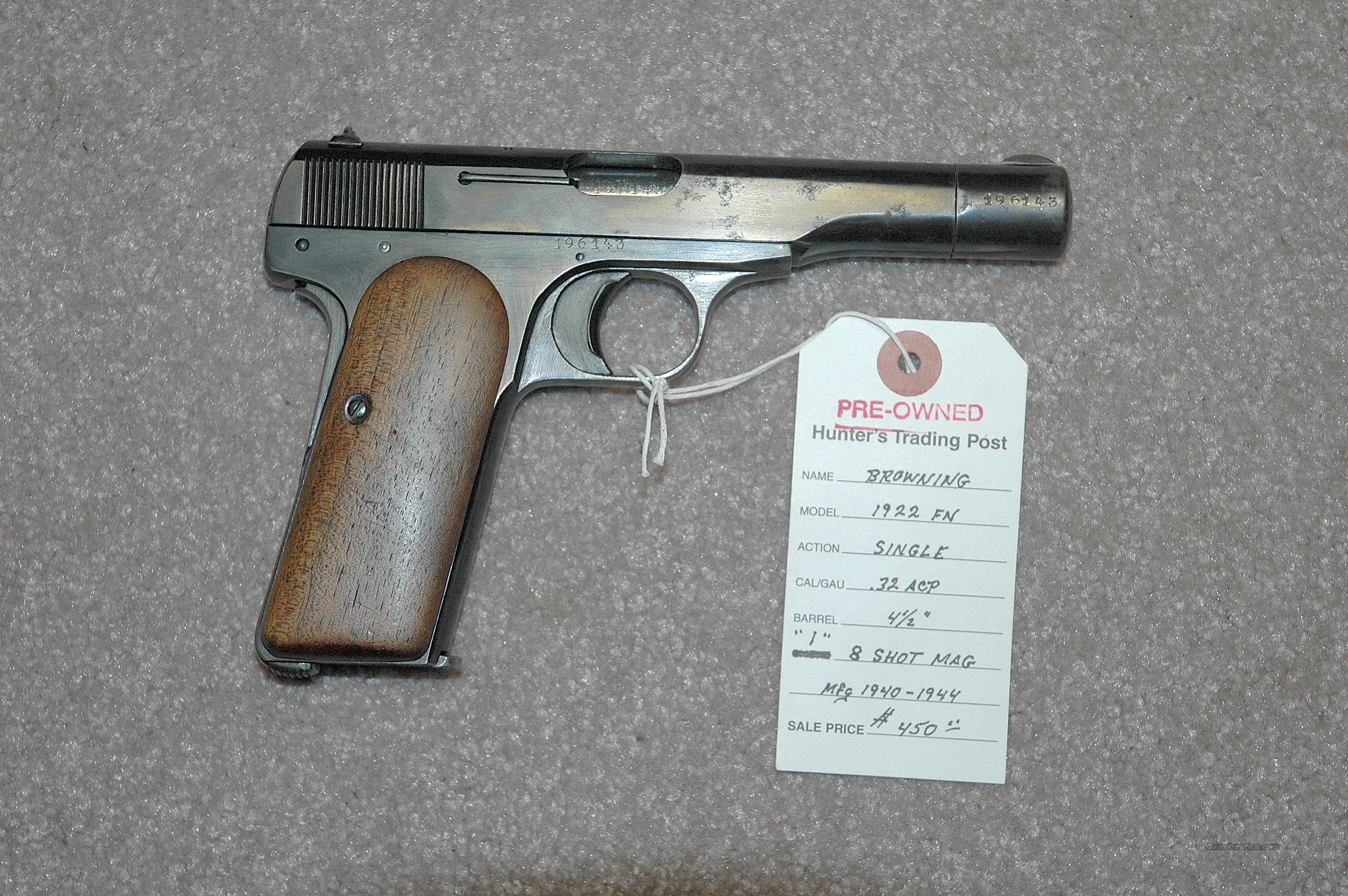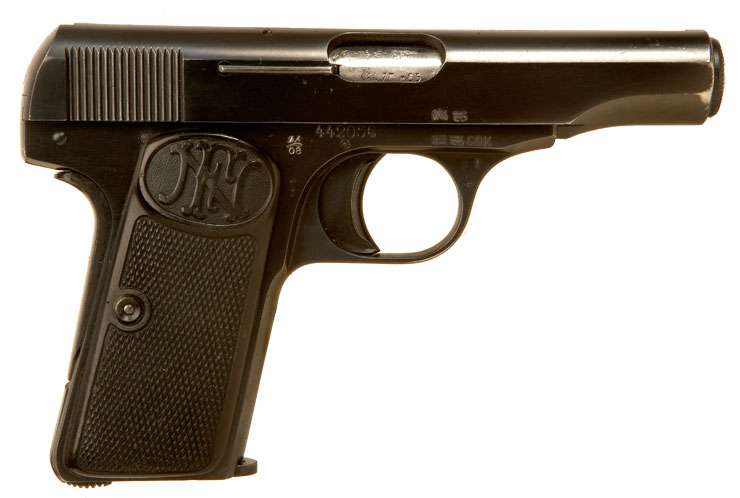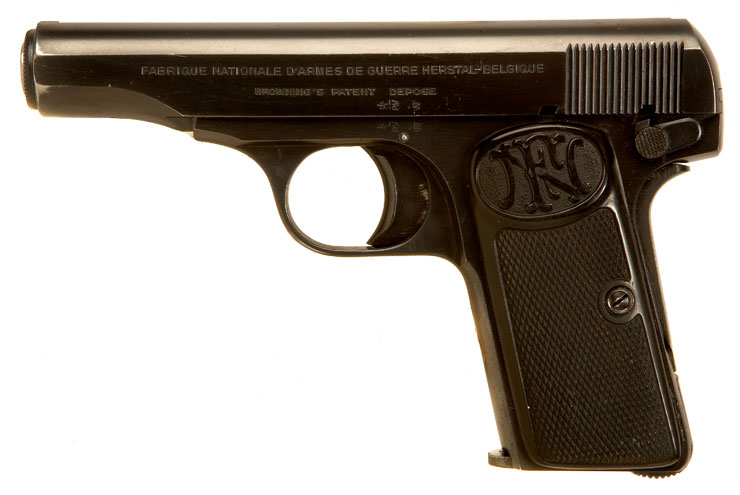

These pistols were built with at least some parts made during the occupation, and were so noted by having their serial numbers prefixed with the letter 'A.' Finish on the A-prefix pistols was either a matte bluing or black enamel. Most of these pistols were for military or government contracts. The M1922 was one of the first products to come off the lines of the liberated factory. Post-Liberation M1922's: With the liberation of Liege in late 1944, what was left of the original factory staff returned and restarted production.
#Fn browning 1910 serial numbers serial number#
(Example: A pistol with the serial number 34554b is actually the 234,554th pistol produced - the first block of 100,000 had no suffix, pistols 100,000 - 199,999 were suffixed with an a, and pistols 200,000 through 299,999 were suffixed with a b.) In 1944, serial number markings were simplified with the full serial number appearing only on the slide, with the last four digits appearing on the frame.


M1922's found their way to all corners of the German government and military as officer's and official's sidearms. The German designations for the M1922 were Pistole 626(b) for the 7.65mm version and Pistole 641(b) for the 9mm Short version. Image Credit: Vanderlinden, Anthony, The Belgian Browning Pistols, Wet Dog Publications, Greensboro, North Carolina, 2001: Image Credit: Vanderlinden, Anthony, The Belgian Browning Pistols, Wet Dog Publications, Greensboro, North Carolina, 2001: Nazi Occupation Pistols: The M1922 has the dubious distinction of being produced in larger numbers than any other firearm at the FN plant during the Nazi occupation. Danish Police: Denmark ordered 3,000 7.65mm M1922 pistols for the Danish Federal Police in the 1930's. Ordered with typical French cost saving features such as black enamel finish and unfluted slide cap, the guns were refinished by the French after the war with a green/gray parkerizing over the original remaining finish. Careful examination notes several pre-war features (17 as opposed to 16 cocking serrations, horn grips, differing slide legends). Image Credit: Vanderlinden, Anthony, The Belgian Browning Pistols, Wet Dog Publications, Greensboro, North Carolina, 2001: Image Credit: Vanderlinden, Anthony, The Belgian Browning Pistols, Wet Dog Publications, Greensboro, North Carolina, 2001: French Navy: Ordered in approximately 1932, these 7.65mm pistols are often mistaken for postwar guns. These pistols were ordered through the FN dealer and distributor in Bucharest, B.D.

Ordusuna Mahsustur' (Turkiey Cumhuriyeti Mahsustur - Property of the Armed Forces of the Republic of Turkey) Variant 3: Marked 'Subaylara Mahsustur' (Property of Officer of the Armed Forces) Romania: The Romanian contract pistols were shipped from FN in September 1935, and were marked with the crest of the Ministry of the Interior, indicating issuance to a law enforcement agency. Subay' (Turkiye Cumhuriyeti Subay - Officer of the Turkish Republic). Three contract variations have been noted, although it is possible that more may surface. Image Credit: Vanderlinden, Anthony, The Belgian Browning Pistols, Wet Dog Publications, Greensboro, North Carolina, 2001: Image Credit: Vanderlinden, Anthony, The Belgian Browning Pistols, Wet Dog Publications, Greensboro, North Carolina, 2001: Turkey: Continuing an Ottoman tradition of FN patronage (Ottoman police were armed with FN Model 1903 pistols), the newly formed Turkish Republic purchased M1922 pistols for the Turkish Army. In 1955, the introduced the Model 1910 pistol for the American market as the Model 1955. While the Model 1910 was widely sold on both civilian and military markets, the Model 1922 was considered specifically a military and police pistol, with FN offering it to individual civilians only by special order. The FN Model 1922 was also used by the following countries: Yugoslavia, The Netherlands, Greece, Turkey, Romania, France, Finland, Denmark, and West Germany in the post war period. These examples carry Nazi production stamps, and most have simple chequered wood grips instead of the earlier or plastic grips bearing the FN logo. 1910/1922 pistols went on to see extensive service in World War Two, and continued to be manufactured by the Germans after their occupation of Belgium and seizure of the FN factory. The purchase was made for the 1st and 2nd Timok infantry divisions of the first army. In 1913, a purchase order for 235, Model 1910 semi automatic pistols was made by the Serbian National Army.


 0 kommentar(er)
0 kommentar(er)
